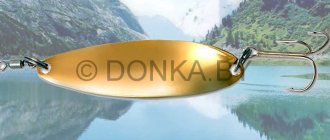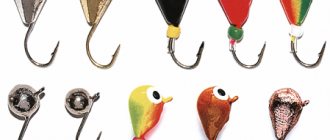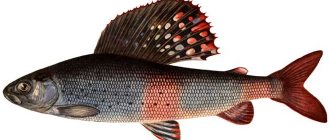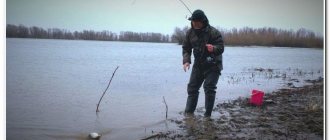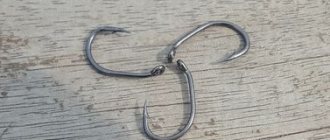Whitefish fishing in summer. Whitefish is widespread in the vast expanses of the Russian Federation. Most species live in the rivers of Siberia and the Far East, some are found in the European part of the country, in particular in the lakes of the Kola Peninsula. There are more than 60 of them in total, so Chud whitefish and pyzhyan or Siberian whitefish and muksun can live in one reservoir. For example, in Lake Onega, the whitefish family is represented by 9 species. To successfully catch whitefish, you need to know its feeding habits. This is a typical predator. As a fry, it confines itself to zooplankton, and having matured a little, it switches to animal food, the size of which increases with its age. The diet mainly consists of benthos, worms, insects, various larvae, mollusks, crustaceans, eggs and young animals (including their own).
The most common fishing methods
Float rod
Most often used for fishing in wiring. You can fish both from the shore with telescopic rods longer than 3.5 meters, and from a boat with shorter poles. The fishing rod is equipped with a lightweight spinning reel, monofilament fishing line up to 0.25 mm thick, a leash of slightly smaller diameter, and a small but clearly visible float. Instead of a hook, a jig is used, which also serves as a weight for the bite alarm. It is desirable that it be red. In addition, you can install 2-3 small plastic balls (for example, orange) on a leash above the jig. This is an imitation of caviar, which whitefish will not swim past indifferently. Small animals are attached to the hook; if the bait is active, you can simply disguise it with a bunch of bright threads.
Spinning
The most effective spinner bait in spinning whitefish fishing is considered to be a light silver spinner of an elongated shape. An appropriate form is selected for it - light or ultra-light. It is equipped with a small inertia-free cord and a high-quality braided cord that can withstand friction against stones and other hard objects. In addition to “pure silver,” spinners with a bluish tint in the upper part work well. For greater attractiveness, you can attach a silicone cut to the tee of the bait or decorate it with bright red hairs. On some reservoirs, whitefish take well on rotating spinners of sizes 0 and 1, which must be driven at the slowest possible speed, on the verge of the petal malfunctioning.
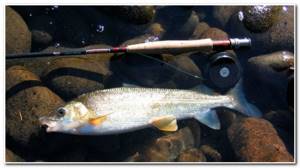
Donka
Fishermen have come up with an unusual way of catching whitefish, called bottom fishing. In the classic version, the donka is a stationary tackle, but it turned out that you can also make effective retrieves with it. This type of tackle is practically no different from a spinning rod, only instead of a spinner a rig is used, consisting of a weight, a leash and a hook with maggots. Outwardly, it resembles a Carolina rig. They throw the donka into a promising place and begin to lead it slowly, making stops periodically. At the same time, the baited hook plays in the current and tempts the fish.

Fishing from a boat
This method is very similar to winter jig fishing, with the difference that the fisherman sits not on the ice, but in his boat. A simple inertial-type reel is installed on a short rod with a side nod, the required amount of fishing line is collected on it, at the end of which a weight is attached, and above it several leashes with hooks at a certain distance from each other. It turns out something like a winter garland. Artificial flies serve as bait. Fishing with such gear requires constant hand work - you need to hit the bottom with a weight until the whitefish grabs one of the flies.
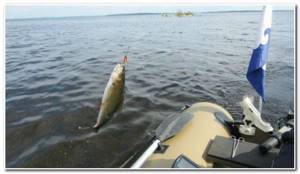
Winter bait and groundbait for whitefish

Many types of bait, both natural and artificial, are suitable for winter fishing:
- mormysh;
- bloodworm;
- worm;
- bark beetle larva;
- maggot;
- silicone vibrotail.
It is believed that the best winter bait for whitefish is mormysh. This is a bait that will never leave a whitefish indifferent, and he will try to swallow it. Small whitefish are caught using bloodworms. Therefore, for such fishing it makes sense to use gray nymphs or amphipods. Millet mixed with aromatic substances works well as bait. This predator eats the eggs of other fish species, but using eggs as bait is not recommended. He does not take the caviar that is on the hook, as if he knows that now is not the season for it.
Complementary feeding rules
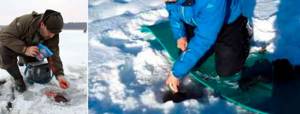
In winter, whitefish gather in schools and move around the reservoir in search of food items. Therefore, the main task is to get to the flock and make every effort to ensure that it remains for a long time in the fishing zone. To do this, bait is used, which is thrown into the hole in small portions to create a vertical cloud of turbidity, which may be attractive to whitefish. To make it look like a uniform column of food elements, the fisherman will have to work hard. But the result will not be long in coming, and the fisherman’s work will definitely be rewarded.
Good results can be obtained if you constantly change the bait supply mode, creating different throwing intervals. You can play with the nature of the bait. It is quite natural that such manipulations with bait create certain inconveniences. When throwing bait into the hole, nodding movements similar to a bite are observed. Sometimes, even an experienced fisherman finds it difficult to determine whether a bite is real or false.
If the fluctuations are repeated and very often, it means that the school of whitefish is rising to another level, which requires a revision of fishing tactics. To do this, you will have to switch to another fishing horizon, changing the fishing depth each time. This operation continues until the bait is in close proximity to the school.
Search for fish
River whitefish prefer to live in areas where the riverbed widens. These are the most promising places on the river. Smaller specimens often come close to the shore, while their more sensible older brothers stay at a safe depth. You can’t get them there either with a fishing rod with a float or with fly fishing, so there are two options left - a boat or a spinning rod. On artificially stocked lakes, whitefish are dispersed throughout the entire water area, but even here there are places where they are found most often. These are the shallows. It is not yet clear why they attract cold-loving fish, but the fact remains. Such areas should be approached with extreme caution, since whitefish become very shy at shallow depths.

Where to catch whitefish in winter
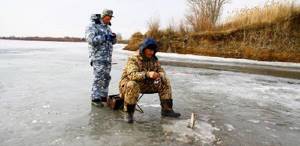
Like any other fishing aimed at catching a specific type of fish, whitefish fishing requires knowledge from the fisherman in terms of choosing a promising place. This question is especially relevant if fishing is carried out in an unfamiliar body of water. If there are fishermen on a reservoir, then it is quite natural that they occupy fishing spots. Despite this, you can try to identify catchable places by paying attention to old holes. In addition, you should carefully study the coastal topography. The most reliable way is to study the bottom topography, and this takes a lot of time. It doesn’t matter, but the result will manifest itself, and a sea of positive emotions will be provided. To do this, you need to drill as many holes as possible in a certain part of the water area. The drilling pattern is selected depending on the size of the reservoir, its geometry and the nature of the coastline. If you find a rocky base or a significant difference in depth, you can safely talk about the catchability of this place.
Whitefish prefer to be in that part of the water area where the water is cleaner and the salt content is higher. Prefers to be in the upper or middle layers of water. With the arrival of winter, this fish gathers in schools and chooses deeper places for wintering. Usually, at this time, whitefish are caught at a depth of 3 to 5 meters. At greater depths, bites are also possible, but they are rare, but excellent specimens are found.
Small individuals prefer to stay in shallow water, while adults prefer to stay in holes, from which they emerge early in the morning or late evening.
Currently, most fishermen prefer to fish in paid reservoirs, where the result of fishing is predetermined. Such fishermen can be called lazy, and for them the main thing is not the fishing process, but the result, which a paid reservoir can provide 100%. It is quite natural that not every amateur fisherman can afford to spend extra money for pleasure, therefore, they manage, trying to create ideal fishing conditions for themselves in wild bodies of water. Many argue that ordinary bodies of water bring more pleasure than paid ones, even if the result is negative.
Baits and feeding
The predatory instincts of whitefish allow it to be successfully caught using various animal baits, such as maggots, worms, caddis flies, jigs, small clams, cut fish, fish eyes, bird giblets, caviar, and fry. All of the above are attached to hooks and jigs or attached to the tee of a spinner.
As for baits, they do not justify themselves in summer fishing. You can try to feed the Baikal omul (a type of whitefish) by throwing jigs into the water in large quantities, but it is better to catch it with a fly.
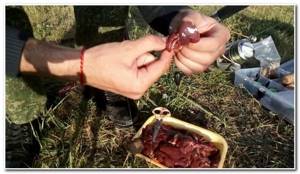
Whitefish (Coregonus chadary (Dybowski, 1869))
Whitefish are a very close relative of the Amur whitefish. The differences between these whitefish are very minor. With almost the same size, the Hadara whitefish has small dark spots on its head and back, and the color is darker. The top of the body is browner, the silver of the sides is darker, the ends of the fins are almost black. The color is darker because the hadar whitefish lives in clearer water.
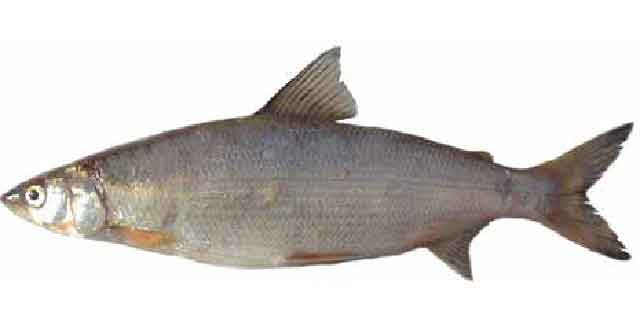
Sig-hadar [3]
It lives in the upper reaches of the Amur, mainly in Shilka and Arguni. But even there it is much less common than the Amur whitefish in the lower reaches. We never met this whitefish.
Some fishing features
The whitefish bite, like any other predator, is quite aggressive. Seeing the bait, he falls on his side, picks it up and sharply rushes into the water column. How not to miss out on your loot? It is very important to make a timely hook, precisely at the moment when the fish is just trying the proposed food. Then everything depends on how ready the fisherman and his equipment are to fight a strong opponent. And he is really stubborn... and cunning. When you pull a whitefish to the shore (side of the boat) and there is no longer any doubt about success, it can free itself from the hook with one powerful and unexpected jerk. That is why it is advisable to fish together with a partner: one catches the fish, the other takes it into the landing net.
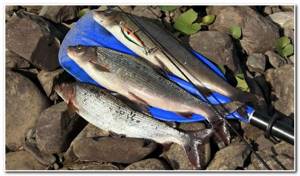
Whitefish Amur (Ussuri)
The Amur whitefish (Coregonus ussuriensis (Berg, 1906)) is one of the members of the genus Coregonus (Linnaeus, 1758) and the whitefish family (Coregonidae (Cope, 1872)), although formerly it was part of the salmon family. The Russians have whitefish; Nanai - sau or savu; Chinese - bai-yu (white fish), tozu-yu, ya-pa-zha; The Japanese have Ussuri-Shiro-sake.
Silvery sides and grayish-greenish or grayish-yellowish (in muddy water) back. The dorsal, adipose and caudal fins are the color of the back; The pectoral, abdominal and anal areas are yellowish-gray. Silver rainbow. In clear water the pigmentation is more intense.
Males and females are barely distinguishable. Females have a slightly smaller head (they are slightly larger than males) and a slightly longer caudal peduncle, as well as a shorter antedorsal (from the top of the snout to the base of the first ray of the dorsal fin) distance. In addition, the length of the base of the dorsal fin is slightly longer in females; The height of the anal fin in females is smaller; The pectoral fins are shorter and the ventral fins are longer. The whitefish does not have a mating coloration. However, he doesn’t need her, the whitefish is already strictly handsome, slender and silvery; only the abdomen sags a little.
Whitefish is cold-loving, and therefore, even in summer, like lenok, it stays in tributaries with cold water or in the riverbed of the Amur River. In addition, in summer lakes, whitefish are found only in those into which rivers carrying cold water flow. For example, to part of the lake. Udyl, adjacent to the mouth of the river. Beachy. Spawns in October along small mountain rivers. For the winter it goes into the riverbed of the Amur and its large tributaries.
It first becomes sexually mature, apparently in the sixth year of life, but some individuals still mature later (having gained 600–800 grams). It grows slowly. A large whitefish weighs a couple of kilograms or a little more. The size is not comparable to all Amur fish, however, whitefish is the dream of every fisherman.
It is of interest to the amateur fisherman, firstly, because it is not so easy to catch it; secondly, because it is beautiful, tasty and nutritious. Whitefish meat is juicy and white, has virtually no small bones, and is also fatty (14–16%).
Record-breaking whitefish
The largest whitefish that I ever held in my hands were 55 centimeters long and weighed two four hundred; 53 - two hundred; half a meter is a kilo eight hundred. They were probably between 12 and 14 years old. True, in my youth I saw a whitefish the size of a small silver chum salmon. I remember it well, but I can’t tell you the exact size.
... In the early 40s, 5-6 thousand centners of it were harvested on the Amur, and after 10-15 years - 4-5 times less. The average size in catches fell from 35–40 to 20–25 centimeters. Half-meter fish weighing eight hundred kilos were already rare then, but now... Now a three-pound whitefish can bring a fisherman victory in the “Record Fish of the Year” competition. In test catches of ichthyologists, three- and four-year-old fish predominate—80–90 percent of them.
S. P. Kucherenko, 2005
When to catch Amur whitefish
The best bite is in November, when the Amur whitefish, fairly hungry, descends to the Amur for the winter or stops in its deep tributaries. The stronger the ice, the more fishermen there are on the Amur. They are caught using a thin-vein fly and a whitefish spinner. Moreover, whitefish are caught all winter.
There are such rare years when at the beginning of November there is still no snow, and there is small transparent ice at the edge of the coast. Then you can try to catch a whitefish using a bottom shock absorber. Although even at such times it is sometimes easier to catch an Amur pike than an Amur whitefish.
Any “warm” November day in the city will not seem like that on the banks of the Amur. Even in the absence of wind, I was cool in a warm winter jacket and winter boots with wool socks.
No fish were caught; after two hours there was not a single fisherman left on the shore except us. I didn’t want to go home, but my husband said: “In cloudy weather you can catch small fish.” The wait was not long, it was becoming cloudy. In just 40 minutes, the sky was filled with leaden clouds and snow began to fall in flakes.
Hook?! No, it took the bait! Even on a cloudy day, silver whitefish will not let a lucky fisherman be deceived: here is the desired catch, in his hands! It smells like fresh cucumbers, as does smallmouth river smelt, by the way.
The whitefish pecked, as it turned out later, for about an hour and a half. I pulled with one or two forces. Some whitefish clung so hard that it was difficult to remove from the hook, others broke off as soon as they found themselves on the shore; some even managed to return to Amur.
It got hot. The snow fell on the face and rolled off it with melt water. But as soon as the snow stopped falling, the whitefish stopped being caught. How it was cut... What fishing! What a wonderful day it was! A week later the guards were up and the wavers were already sitting on the ice.
Literature:
- Kucherenko, Sergey Petrovich. Pisces of the Amur / Sergey Kucherenko. — 2nd ed., rev. and additional - Khabarovsk: Priamurskie Vedomosti, 2005 (Krasnoyarsk: PIK Offset). — 271 p. : ill.; 21 cm. - (Series “Russian Far East. Window to Nature.”); ISBN 5-8003-0028-3
- Nikolsky, Georgy Vasilievich. Fishes of the Amur basin: Results of the Amur ichthyol. expeditions. 1945-1949 / Academician Sciences of the USSR. - Moscow: Publishing House Acad. Sciences of the USSR, 1956. - 551 p. : ill.
- Novomodny G.V. Fishes of the Amur near Khabarovsk (a short illustrated guide) / G.V. Newfangled. – Voronezh, 2014. – 92 p.
Average rating: (Total votes: 6 )
How is Amur whitefish different from Hadara whitefish?
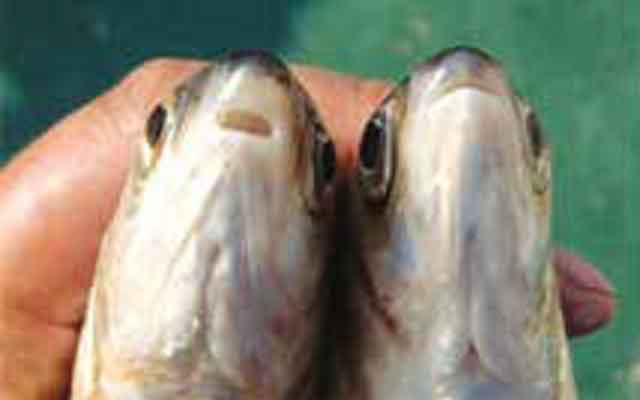
On the left - whitefish-hadars, on the right - Ussuri whitefish [3]
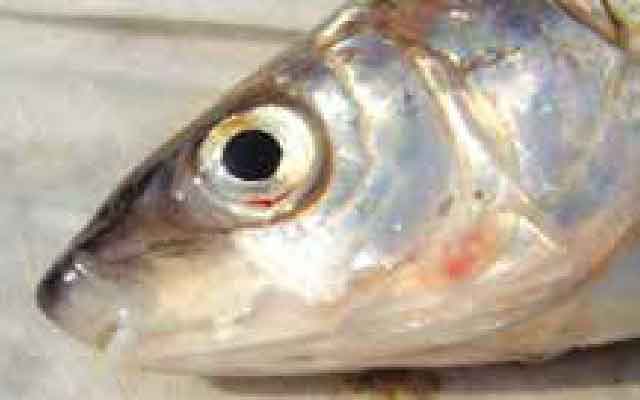
Sig-hadar [3]
Do you understand how the Amur whitefish differs from the Hadara whitefish? Not so much for me. Besides, it's not that important to me. Let ichthyologists sort this out. Whitefish is a whitefish. This story reminds me of the story with redheads (boletus).


